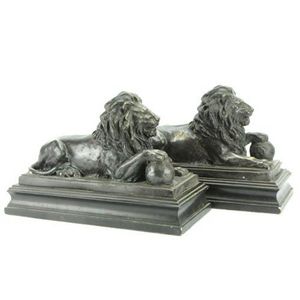Hungarian Rococo Cast Iron Wall Mirror
You must be a subscriber, and be logged in to view price and dealer details.
Subscribe Now to view actual auction price for this item
When you subscribe, you have the option of setting the currency in which to display prices to $Au, $US, $NZ or Stg.
- Rococo - A stylistic development covering the period from about 1730 to 1770, during the reign of Louis XV in France. The rococo style falls between the rather overbearing manner of the Baroque and the formal elegance of Neoclassicism. The Rococo style reached its full maturity in France, though many of its features were used by English furniture makers. The style is marked by asymmetrical forms, especially pierced and intricate scroll work as in mirror frames, chair backs etc., and the use of shells and floral motifs. The term derives from the French 'rocaille', meaning rock work, as in gardens and fountains. There was a major Rococo revival in the mid-19th century and indeed much of what is now considered to be typically Victorian furniture is influenced by the Rococo. It is essentially feminine in feeling, and for this reason, perhaps, was regarded as rather frivolous by its successors.
- Signed or Stamped - A signed piece of furniture may mean that the maker has signed (and hopefully dated) the piece in the same way that we sign a cheque, but more likely, that it bears evidence of the name of the maker, wholesaler or retailer as a paper label, metal plaque, impressed into the timber or in later pieces after about 1880, stamped onto the timber with an ink stamp.
The 'signature' or stamp will always be in an unobtrusive position: under the top of a table, on the underside of the rails of a chair, inside a drawer or on the back.
The fact that a piece is 'signed' considerably enhances its value. Signed Australian furniture is extremely rare, and for imported furniture, it is a mark of quality of the item, as only the items by the top makers or retailers were 'signed'
This item has been included into following indexes:
- mirrors, wall, material - iron, brass bronze and other metal 164
-
mirrors, wall, period, age or style
- Louis style 371
- overmantle 830
- Victorian 326
Visually similar items

A Chinese bronze seated figure of the white-robed Guanyin, 17th century. sitting cross-legged on a lotus base, with high chignon and diadem of the Amitabha Buddha, depicted wearing necklaces and flowing robes, in the left hand, Guanyin holds the (detachabl

Ansonia late 19th century spelter 'Denis Papin' clock inset porcelain dial with black Arabic hour numbers, with an eight day movement. Ornately decorated with applied scrolled and beaded motifs, with a pendulum. Condition good to fair, some staining to the

A Chinese carved rosewood dragon and shi-shi decorated hall seat, 110 cm high, 160 cm wide, 58 cm deep

Bronze pair of lion figures modelled resting on a stepped pedestal base with one hand holding a ball. Condition good, minor wear to the bases. Length 34 cm
